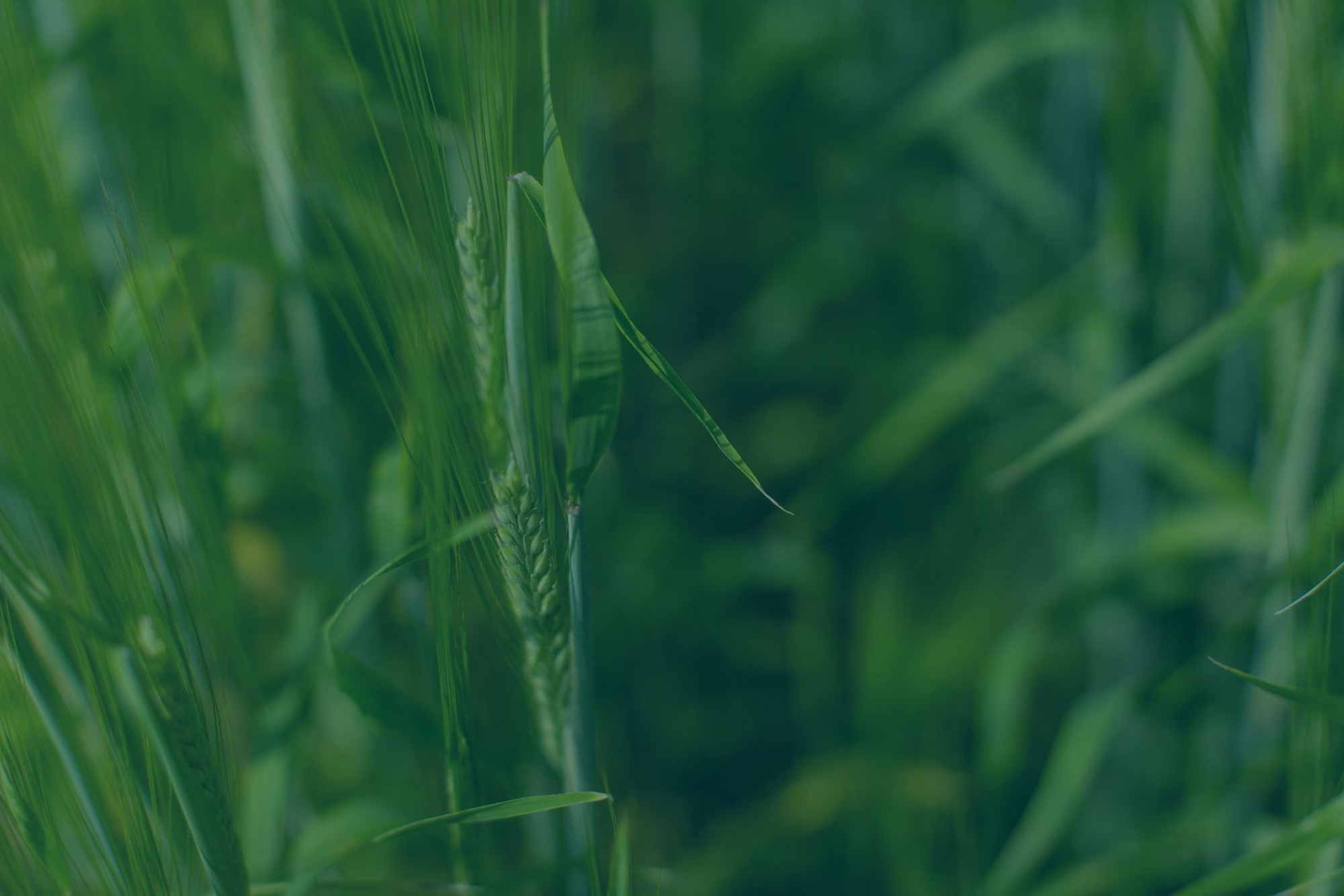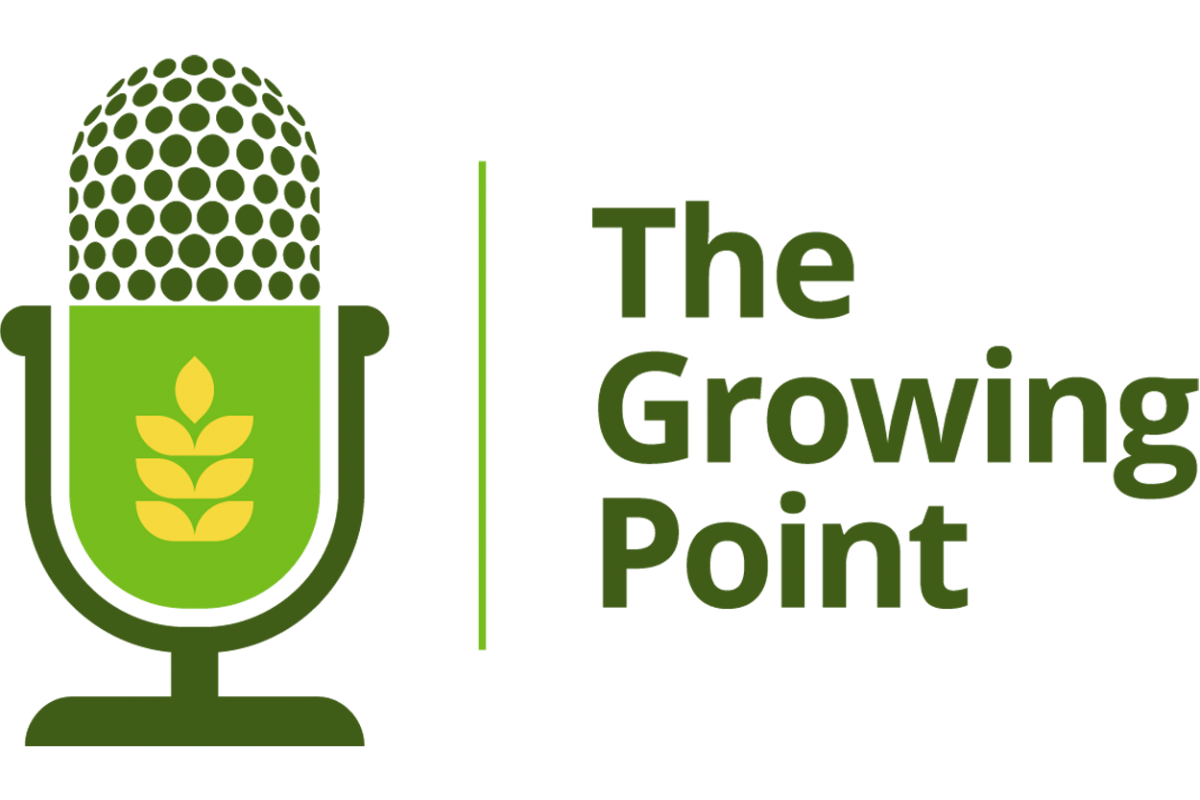Growing malt varieties for feed end-use
By Jeremy Boychyn, Sheri Strydhorst and Laurel Thompson
Recent research has indicated that some new malt varieties may have increased profit opportunities when grown with feed agronomic management. However, this will depend on your variety selection, the potential for malt acceptance, and yield response factors.
Barley acres, on average, have declined by 3% per year for the last 25 years. While this is due to a variety of factors, profitability is likely one of the leading causes. Laurel Thompson (Crop Research Scientist at Lakeland College) recently tested the response of malt varieties grown with feed barley agronomic management. Previous data in Alberta saw yields of some new malt varieties yielding equal to some feed varieties. So, growing new malt varieties at high nitrogen rates may be a profitable avenue for some growers.
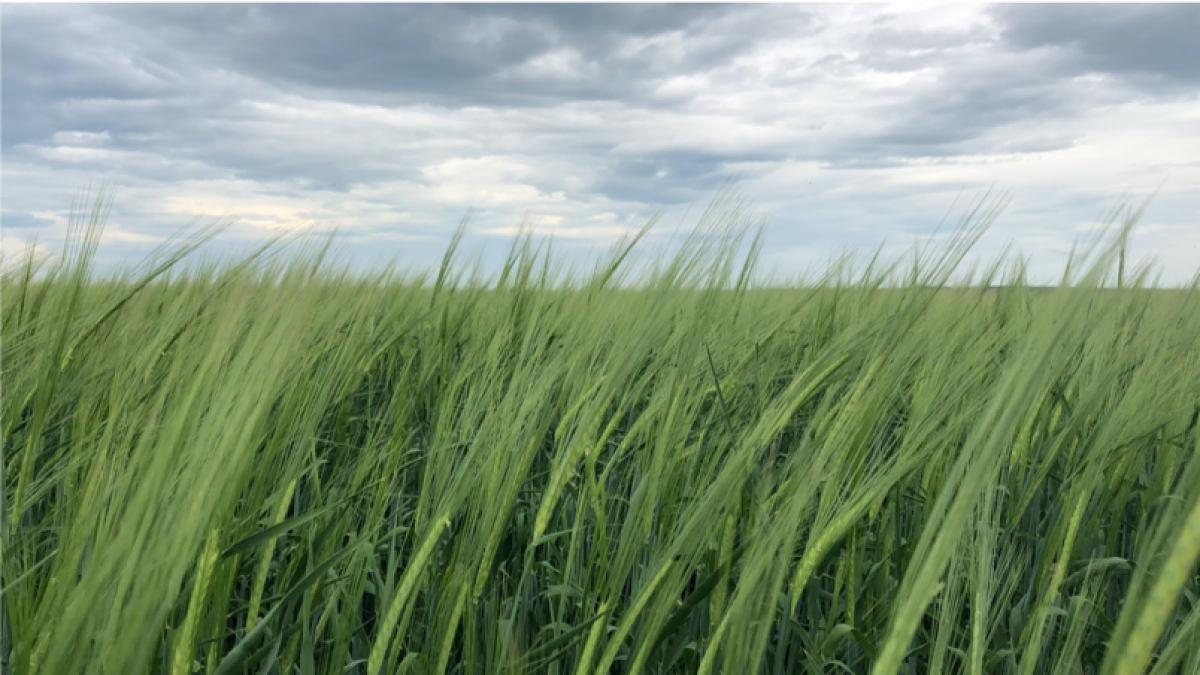
The study, conducted in Vermilion and Forestburg in 2019 and 2020, investigated three malt (CDC Copeland, AAC Synergy, and CDC Bow) and three feed (CDC Austenson, Brahma, and Oreana) varieties. Varieties were fertilized at two different total nitrogen rates (71lbs/ac and 125lbs/ac to simulate malt vs and feed agronomic management, respectively). Total nitrogen rates include applied nitrogen fertilizer and soil nitrate-N in the top six inches of soil. The research was conducted on either canola or wheat stubble. Yield and profitability were measured.
Table 1: Site characteristics at research sites in Vermilion and Forestburg in 2019 and 2020.

Yields
Variety yields from the feed and malt classes responded similarly to N rate in the study. Averaged over all site-years, the feed variety Oreana yielded the highest of all varieties. At Forestburg in 2019, Oreana statistically out-yielded all other feed and malt varieties. In the other site-years, Oreana was one of the highest yielding varieties. Oreana was not statistically higher yielding than CDC Austenson at Vermilion in 2019, CDC Austenson, Brahma, and AAC Synergy at Vermilion in 2020, or Brahma at Forestburg in 2020.
Feed varieties tended to yield more than malt varieties. Yet, in some situations, malt varieties yielded the same as feed varieties. For example, at Vermilion in 2019 and 2020, AAC Synergy yielded statistically the same as at least one feed variety.
Economics
The economics described below are based on urea pricing of $700/MT, $4.00/bu feed barley, and either $5.00 or $5.25/bu malt barley pricing. For ‘Net Profit’ ($/ac), fungicide, herbicide, equipment use etc. not included as they were equal for all treatments.
Feed barley agronomic management (high nitrogen fertilizer rate)
Oreana was the most profitable variety when grown using feed agronomic management for all four site-years. In some site-years, the malt variety CDC Bow was more profitable than some feed varieties when grown using feed agronomic management. At Forestburg in 2019, CDC Bow ($451.21/ac) was more profitable than CDC Austenson ($422.41/ac) and Brahma ($418.49/ac). At Forestburg in 2020, CDC Bow ($402.97/ac) had similar profitability to CDC Austenson ($402.09/ac). CDC Copeland grown using malt agronomic management was often one of the least profitable options.
Table 2: Profitability of feed end-use agronomic management (125lbs/ac of nitrogen and $4.00/bu market price) of feed and malt varieties at Vermilion and Forestburg in 2019 and 2020 as a percentage of lowest profitability treatment within each site-year.
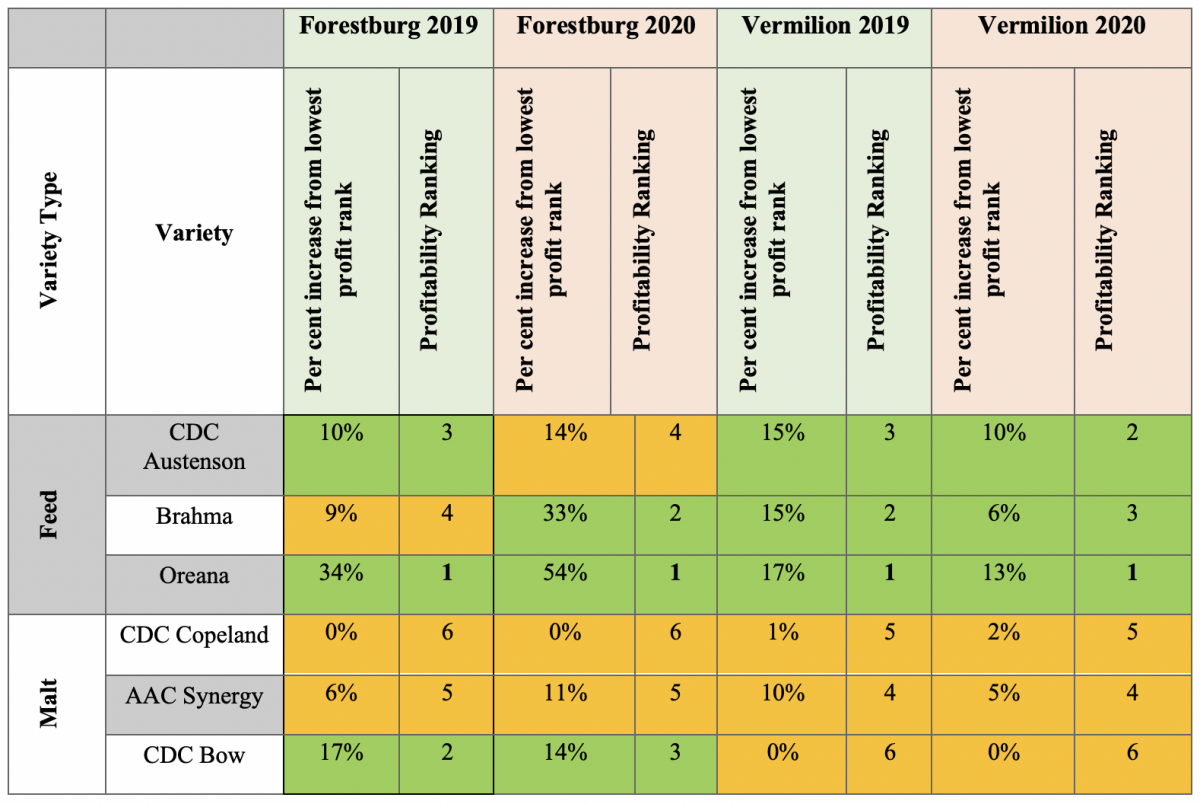
*Dark green shading indicates the top three economic varieties in each site year under within the described scenario.
Feed varieties managed for maximum yields vs malt varieties managed for malt acceptance
In two of the site-years (Vermilion 2019 and Forestburg 2020), growing the feed variety Oreana was more profitable than growing a malt variety for malt end-use (assuming malt acceptance). When malt pricing was set to $5.25, this advantage was still present.
In the other two site-years (Vermilion 2020 and Forestburg 2019) all malt varieties are grown for malt end-use (assuming acceptance) had higher net profit than any feed variety grown with feed agronomic management.
Table 2: Profitability of feed end-use agronomic management (125lbs/ac of nitrogen and $4.00/bu market price) of feed varieties compared to malt end-use agronomic management (70lbs/ac of nitrogen and $5.00/bu market price) of malt varieties at Vermilion and Forestburg in 2019 and 2020 as a percentage of lowest profitability treatment within each site-year.
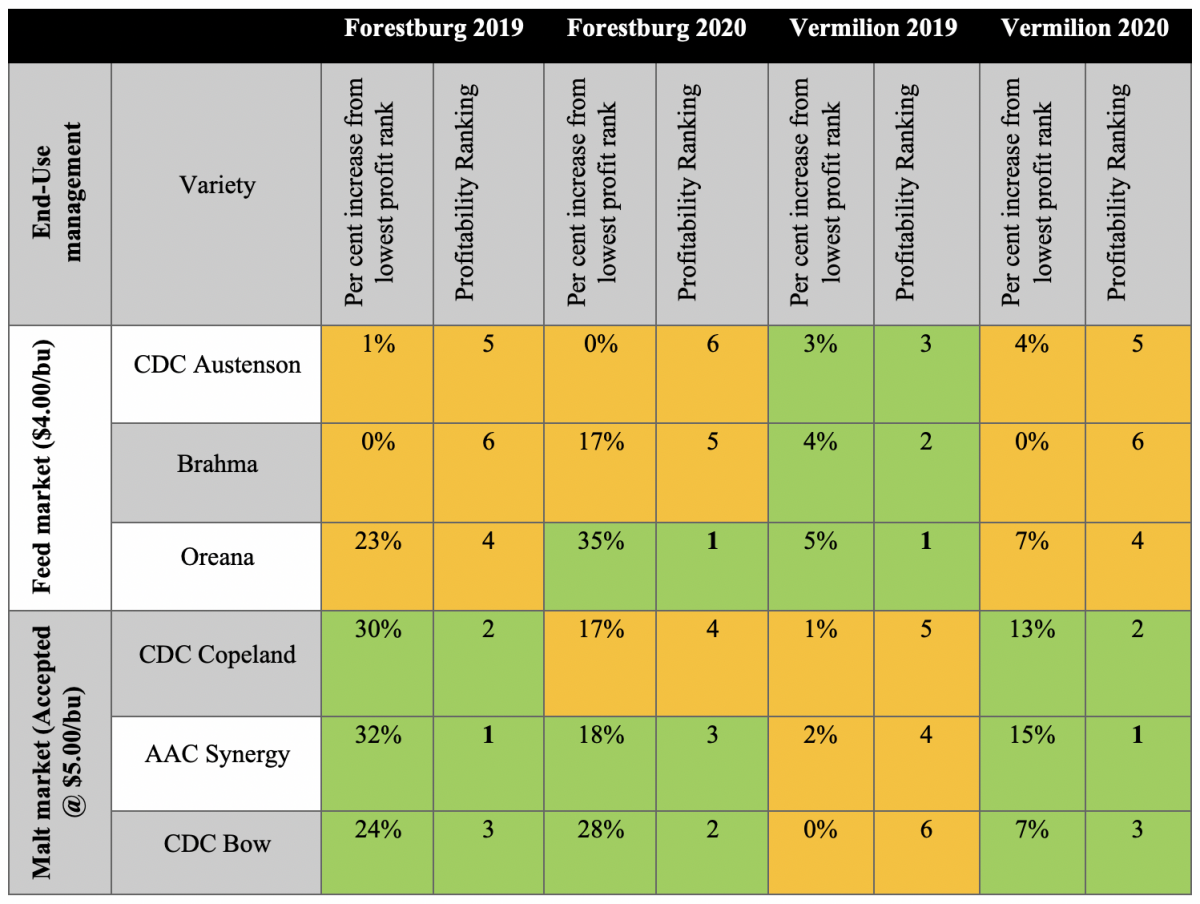
*Dark green shading indicates the top three economic varieties in each site year under the described scenario.
Unfortunately, meeting malt quality does not always occur when aiming for malt production. In all site-years, malt varieties grown for malt end-use that did not meet malt quality had the lowest net profit.
Malt varieties for feed or malt end-use
When comparing the economics of different management techniques for malt varieties if malt grade was achieved, then malt agronomic management was the most profitable at half of sites (2 of 4). This means that if a farm consistently achieves malt acceptance, targeting malt agronomic management will be equally profitable but potentially at increased risk than growing a high yielding feed variety for feed end-use.
If a farm regularly misses malt acceptance, growing malt or feed varieties with feed agronomic management may be more profitable and less risky. This is more likely if increased nitrogen rates substantially increase yields in a particular environment. In these situations, the higher yields achieved with feed agronomic management will close the economic gap between the feed and malt end-use market and lead to increased barley acres.
Listen to our recent The Growing Point podcast episode with Laurel Thompson on her malt versus feed research here.
